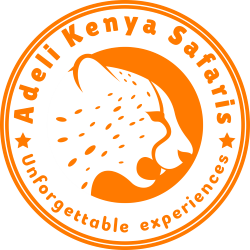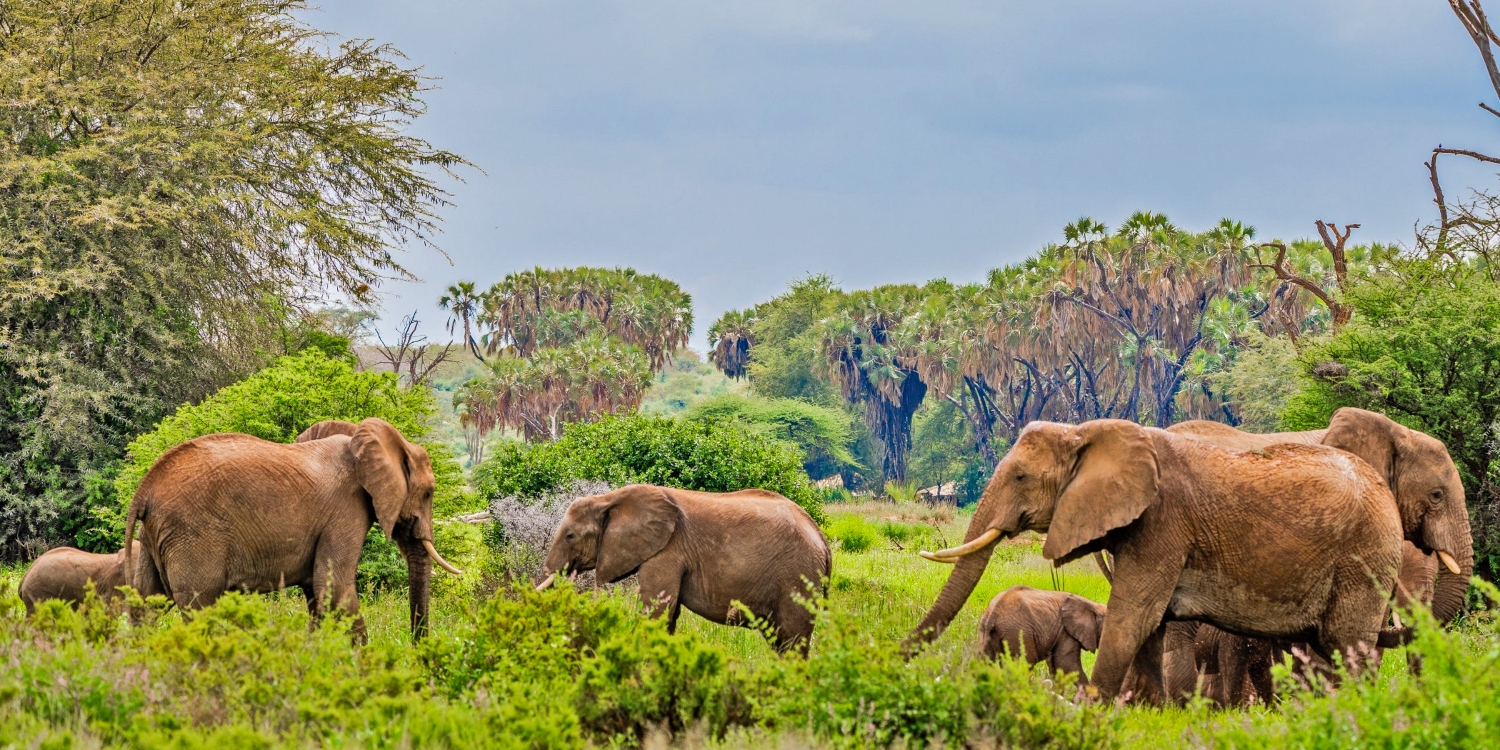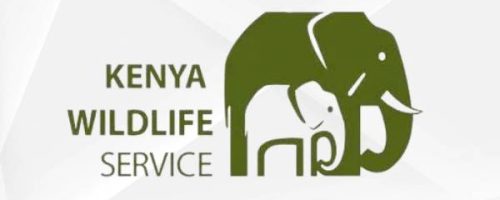Luxury safari tours in Kenya
Join Adeli Kenya Safaris on a luxury Kenya safari holiday for the journey of a lifetime. Let us guide you to some of the most epic wildlife locations on earth. Experience close encounters with Africa’s ‘big five’ – lion, elephant, rhino, leopard and buffalo – and feel the essence of the continent running through your veins. Our experienced, friendly and passionate African safari guides will immerse you in some of the most unique and unforgettable experiences
Here are our featured safari tours in Kenya
Visit: Nairobi National Park (World’s only wildlife park in a city)
Visit: Amboseli National Park (Large herds of elephants & views of Mount Kilimanjaro)
Visit: Amboseli National Park (Large herds of elephants & views of Mount Kilimanjaro)
Visit: Ol Pejeta Conservancy, Lake Nakuru & Masai Mara
Visit: Amboseli National Park, Lake Naivasha & Masai Mara National Reserve
Visit:Samburu Reserve, Ol Pejeta Conservancy, Lake Nakuru and Mara Mara Reserve
Visit: Mara Mara Reserve (booked as a safari extra activity)
Visit: Amboseli National park, Mara Mara Reserve & Serengeti National Park (booked as a safari extra activity)
Kenya has been a tourist attraction center and one of the most famous travel destinations for centuries on end. Kenya is renowned for its remarkable diversity of landscapes, animals and cultures. From vast plains to snowcapped mountain summits, Kenya provides a striking backdrop for Africa’s most classic safari adventures. Witness the Great Migration in the Maasai Mara. Hear elephants trumpet in Amboseli. Scout for rhinoceros making a comeback at Lewa. At night, tucked beneath canvas under a canopy of stars, listen to a lion roar across the savanna. It’s all here in Kenya, Africa’s original safari destination.
Kenya’s tremendous biodiversity includes 25,000 different animal species. In the Maasai Mara, the plains darken during the annual wildebeest migration, with predators in stealthy pursuit. The reserve has plenty of cheetah but is above all the Lion Kingdom, with large prides holding court. Other carnivores include spotted hyena, jackal and bat-eared fox. The Mara is home to large grazing herds of zebra, giraffe, buffalo, gazelle and topi. Hartebeest, waterbuck, dik-dik, duiker, klipspringer, oribi and the rare roan round out the antelope varieties. Crocodile and hippo are thick in the Mara and Talek rivers, while the acacia woodlands shelter 470 of Kenya’s 1100 bird species. Amboseli National Park, famed for elephants, also has some endangered rhinos, which are seen more often at Lewa Conservancy, a project devoted to their recovery. Visitors to Samburu may see leopard and two endemic species found only in northern Kenya: Grevy’s zebra and the reticulated giraffe.
No other African country boasts the diversity of Kenya. From its palm-fringed coast to the 17,057′ summit of Mt. Kenya, from lush tea plantations to desert scrub, Kenya’s varied landscapes are matched only by its variegated cultures. Kenya is bordered by the Indian Ocean, Somalia, Ethiopia, South Sudan, Uganda and Tanzania. The Great Rift Valley bisects the central highlands, one of the richest agricultural regions in Africa. English and Swahili are the official languages. Kenya is the regional hub for trade and finance in East Africa, and its economy is dominated by tourism, transportation, communications and agriculture. Principal cash crops are tea, horticultural produce and coffee.
KENYA SITES
There are only two places in the world where you can witness the unique great migration of wildebeests, Kenya & Tanzania. Both of the countries are known for wildlife and being able to see The Big 5 while on safari.
TOWNS
Nairobi is Kenya’s capital city. In addition to its urban core, the city has Nairobi National Park, a large game reserve known for breeding endangered black rhinos and home to giraffes, zebras and lions. Next to it is a well-regarded elephant orphanage operated by the David Sheldrick Wildlife Trust. Nairobi is also often used as a jumping-off point for safari trips elsewhere in Kenya.
Modern Nairobi is still the safari capital of the Africa, but the modern world has quickly caught up with the city. A frontier town no more, Nairobi has become one of Africa’s largest, and most interesting cities.
Nairobi is a city that never seems to sleep. The entire town has a boundless energy, and is thriving place where all of human life can be found.
This is a place of great contrasts where race, tribe and origin all become facets of a unique Nairobi character. The city has not lost its sense of the past, with an excellent museum and the historical home of Karen Blixen, author of Out of Africa open to visitors.
Mombasa is a place steeped in history, yet at the same time fascinating commercial and cosmopolitan port town.
Mombasa is an island connected to the mainland by bridges and ferries. The town overlooks a wide harbor, where commercial shipping mingles with traditional sailing dhows.
The true heart of Mombasa is found in the exotic old town, among the narrow winding streets and Arab architecture. The air here is always heavy with the scent of spices.
At the water’s edge is Fort Jesus, an imposing fort that stands watch over the harbor.
The high gun turrets, battlements and underground passages of this 16th Century Fort were the centre of a historic struggle for control of the Kenya coast between the Portuguese army and the Shirazi Arabs. This war was waged around Mombasa over hundreds of years and countless battles, and the Fort stands as a testament to this tumultuous past.
Modern Mombasa is a city of great diversity and life. This is a town were all are welcomed and quickly absorbed into this great coastal melting pot.
Mombasa is a place where both history and progress are greatly valued, where a busy harbor existence is lived at its own unique, tropical pace.
Eldoret
Eldoret is a principal city in Rift Valley region and the fifth largest in the country also serves as the capital of Uasin Gishu County. Lying south of the Cherangani Hills, the local elevation varies from about 2100 metres at the airport to more than 2700 metres in nearby areas (7000–9000 feet). The population was 289,380 in the 2009 census, and it is currently the fastest growing town in Kenya. It is believed that the town is likely to be one of the big Cities in the near future due to its ever increasing population coupled with increased middle class and the ease of doing business in the town.
Eldoret has traditionally not been known as a tourist destination and does not have much to differentiate it from Kenya’s other highland centres. Being Kenya’s fifth-largest city however, it is a great deal bigger and serves as a base for touring the North-Rift circuit. The city has a decent variety of accommodation options, notably the Sirikwa Hotel, Poa Place and the ultra-modern Boma Inn as well as enough night-life options to interest one for an evening or two.
Kisumu
Kisumu is a Kenyan port city on Lake Victoria. It’s known for lakeside viewpoints at Dunga Hill Camp and Hippo Point. The Kisumu Impala Sanctuary shelters herds of impalas and zebras. Its animal orphanage is home to wildlife like cheetahs and baboons. The city’s Kisumu Museum displays artifacts related to the people of the Nyanza Province. Southwest, Ruma National Park has tall cliffs, roan antelope and birdlife.
Attractions in the city include Kibuye Market, Oile Market, the Kisumu Museum, an impala sanctuary, a bird sanctuary, Hippo Point,Shopping malls and the nearby Kit Mikaye and Ndere Island National Park.
On the main street of Kisumu city, Oginga Odinga Road, a tall Town Clock stands in the middle of the road. It was unveiled on 19 August 1938 by the then Governor of Kenya Sir Robert Brooke-Popham. The Town Clock was built in memory of Kassim Lakha who arrived in East Africa in 1871 and died in Kampala in 1910. It was erected by his sons Mohamed, Alibhai, Hassan and Rahimtulla Kassim, as the inscription on the Town Clock reads
NATIONAL PARKS
The Aberdare National Park is a protected area in the Aberdare Mountain Range in central Kenya located east of the East African Rift Valley. It covers the higher areas and the Aberdare Salient to the east
Picturesque, steep forested ravines and open moorland characterize the Aberdare National Park. The park provides a habitat for elephants, black rhinos, leopards, spotted hyenas, olive baboons, black and white colobus monkeys, buffalos, warthogs and bushbucks among others. Rare sightings include those of the Giant Forest hog, bongo, golden cat, serval cat, African wild cat, African civet cat and the blue duiker. Visitors can indulge in picnics, trout fishing in the rivers and camping in the moorlands. Bird viewing is rewarding, with over 250 species of birds in the park, including the Jackson’s Francolin, Sparrow hawks, goshawks, eagles, sunbirds and plovers.
Amboseli National Park
With the snow-capped peaks of Mt. Kilimanjaro as a glorious backdrop, and elephants galore having free reign of this national park, the Amboseli National Park is the perfect retreat for those in need of relaxing.
Generally, an arid area, there is nevertheless an oasis of swamps that has offered the perfect support for an exceptional variety of birdlife (water birds, kingfishers, pelicans, etc.) and animals such as elephants, lions, cheetahs, cape buffalo, impala, wildebeest, zebra, giraffe, and many more to thrive in this eco-system. There are several lodges and campsites in the national park.
Amboseli’s greatest attraction is that it is rated as the best place in Africa to view free-ranging elephants and spectacular views of Mt. Kilimanjaro.
Mount Kenya National Park.
Mount Kenya National Park was established in 1949 to protect Mount Kenya, the wildlife and surrounding environment, which forms a habitat for wild animals, as well as acting as an area for the catchment of water, to supply Kenya’s water.
Climbing to 5,199 meters, Mount Kenya is the second tallest mountain in Africa. The scenery surrounding this designated World Heritage Site is breath-taking. It is pristine wilderness with lakes, tarns, glaciers, dense forest, mineral springs and a selection of rare and endangered species of animals, high altitude adapted plains game and unique montane and alpine vegetation. Visitors can enjoy mountain climbing, camping and caving with the mountain’s rugged glacier-clad peaks providing the perfect backdrop.
Wildlife
Include Elephants, tree hyrax, white tailed mongoose, suni, black fronted duiker, mole rat, bushbucks, water buck and Elands. Animals rarely seen include leopard, bongo, giant forest hog.
Birds
Over 130 bird species have been recorded.
Important Information for Visitors
All visitors should enter the park with a qualified and certified guide. Guides and potters have identification cards issued by the park management.
Disposable plastic water bottles are not allowed in the park.
Guides and potters are not allowed to carry luggage that exceed 25KG. Weighing of luggage will be done at the gate on entry.
All visitors are required to check in and out of the park, this is done by recording personal information in the entry and exit books.
The Samburu National Reserve is a game reserve on the banks of the Ewaso Ng’iro river in Kenya. On the other side of the river is the Buffalo Springs National Reserve. The park is 165 km² in size and is situated 350 kilometers from Nairobi. It ranges in altitude from 800 to 1230m above sea level.
Location.
Samburu National Reserve is situated at the southeastern corner of Samburu District in the Rift Valley Province of Kenya. It is bordered to the south by Ewaso Nyiro River, which separates it from the Buffalo Springs National Reserve.
The reserve covers an area of 165 Km² and is located around 345Km from Nairobi.
Climatic Conditions
The Reserve lies within ecological zone V- which is classified as arid and semi- arid with moisture index of 42 to 57, which indicate that vapor-transpiration is greater than available moisture. The days are extremely hot while the nights are cool. The annual mean temperatures range between 18ºC and 30ºC, while the mean annual rainfall is 354mm with peaks in November and April. The dry season starts in late May, and goes up to early October during when large concentration of wildlife is found in the reserve due to availability of lush vegetation along the Ewaso Nyiro River, the main source of water to the Reserve and the nearby communities.
Available games (and chances of seeing)
The reserve is reach in wildlife with fame for abundance in rare northern specialist species such as the Grevy Zebra, Somali Ostrich, Reticulated Giraffe, Gerenuk and the Beisa Oryx (Also referred as Samburu Special). The reserve is also popular with a minimum of 900 elephants. Large predators such as the Lion, Leopard and Cheetah are an important attraction (Kamunyak the Miracle Lioness that adapted the baby Oryx is a resident in the reserve). Wild dog sightings are also a common attraction to this unique protected area. Birdlife is abundant with over 450 species recorded. Birds of the arid northern bush country are augmented by a number of riverine forest species. Lesser Kestrel and the Taita Falcon are species of global conservation concern and they both utilize the reserve. Five species categorized as vulnerable have recorded in the reserve. These are African Darter, Great Egret, White-headed Vulture, Martial Eagle and the Yellow-billed Ox-pecker. Critically endangered species under CITIES – Pancake tortoise (malacochersus tornieri) is found in the reserve
Tsavo East National Park is one of the oldest and largest parks in Kenya at 13,747 square kilometres. Situated in a semi-arid area previously known as the Taru Desert it opened in April 1948, and is located near the town of Voi in the Taita-Taveta County of the former Coast Province.
The sight of dust-red elephant wallowing, rolling and spraying each other with the midnight blue waters of palm-shaded Galana River is one of the most evocative images in Africa. This, along with the 300 kilomtere long Yatta Plateau, the longest lava flow in the world, make for an adventure unlike any other in the Tsavo East. The park forms the largest protected area in Kenya and is home to most of the larger mammals, vast herds of dust –red elephant, Rhino, buffalo, lion, leopard, pods of hippo, crocodile, waterbucks, lesser Kudu, gerenuk and the prolific bird life features 500 recorded species.
Key features
Wildlife
The Park is home to most of the larger mammals, vast herds of dust –red elephant, Rhino, buffalo, lion, leopard, pods of hippo, crocodile, waterbucks, Lesser Kudu, Gerenuk and Hirola
Birds
The prolific bird life features 500 recorded species.
Tsavo West National Park is located in the Coast Province of Kenya. The park covers an area of 9,065 square kilometers. The A109 road Nairobi-Mombasa and a railway divides it from the adjoining Tsavo East National Park. Together with adjoining ranches and protected areas, they comprise the Tsavo Conservation Area.
From the sight of fifty million gallons of crystal clear water gushing out of from the under parched lava rock that is the Mzima Springs to the Shetani lava flows, Tsavo West is a beautiful, rugged wilderness. The savannah ecosystem comprises of open grasslands, scrublands, and Acacia woodlands, belts of riverine vegetation and rocky ridges including the Poacher’s Lookout where visitors can see the teeming herds in the plains below. Tsavo West offers some of the most magnificent game viewing in the world and attractions include elephant, rhino, Hippos, lions, cheetah, leopards, Buffalos, diverse plant and bird species including the threatened corncrake and near threatened Basra Reed Warbler.
Key features
Wildlife
Leopard, Cheetah, Wild dogs, Buffalo, Rhino, Elephant, Giraffe, Zebra, Lion, Crocodile, Mongoose, Hyrax, Dik- dik, Lesser Kudu, and Nocturnal Porcupine. Prolific birdlife features 600 species.
LAKES
Lake Naivasha
Lake Naivasha is a freshwater lake in Kenya, outside the town of Naivasha in Nakuru County, which lies north west of Nairobi. It is part of the Great Rift Valley. The name derives from the local Maasai name Nai’posha, meaning “rough water” because of the sudden storms which can arise.
Lake Naivasha is a beautiful freshwater lake, fringed by thick papyrus. The lake is almost 13kms across, but its waters are shallow with an average depth of five metres.
Lake area varies greatly according to rainfall, with an average range between 114 and 991 sq kms. At the beginning of the 20th Century, Naivasha completely dried up and effectively disappeared. The resulting open land was farmed, until heavy rains a few years later caused the lake to return to existence, swallowing up the newly established estates.
Afternoon wind and storms can cause the Lake to become suddenly rough and produce high waves. For this reason, the local Maasai christened the lake Nai’posha meaning ‘rough water’.
The lake and its surroundings are rich in natural bounty, and the fertile soils and water supply have made this one of Kenya’s prime agricultural regions. Much of the lake is surrounded by forests of the yellow barked Acacia Xanthophlea, known as the yellow fever tree.
These forests abound with bird life, and Naivasha is known as a world class birding destination. The waters of the lake draw a great range of game to these shores. Giraffes wander among the acacia, Buffalo wallow in the swamps and Colobus monkeys call from the treetops while the Lakes large hippo population sleep the day out in the shallows.
The region surrounding the Lake is well worth exploring. There are two more smaller lakes nearby, Oloidien, and Sonachi, a bright green crater lake.
Lake Nakuru is one of the Rift Valley soda lakes at an elevation of 1,754 m above sea level. It lies to the south of Nakuru, in the rift valley of Kenya and is protected by Lake Nakuru National Park. The lake’s abundance of algae used to attract a vast quantity of flamingos that famously lined the shore.
On the floor of the Great Rift Valley, surrounded by wooded and bushy grassland, lies the beautiful Lake Nakuru National Park. Visitors can enjoy the wide ecological diversity and varied habitats that range from Lake Nakuru itself to the surrounding escarpment and picturesque ridges. Lake Nakuru National Park is ideal for bird watching, hiking, picnic and game drives.
Lake Nakuru is one of the Rift Valley soda lakes at an elevation of 1,754 m (5,755 ft) above sea level. It lies to the south of Nakuru, in the rift valley of Kenya and is protected by Lake Nakuru National Park.
The lake’s abundance of algae used to attract a vast quantity of flamingos that famously lined the shore. Other birds also flourish in the area, as do warthogs, baboons and other large mammals. Eastern black rhinos and southern white rhinos have also been introduced.
The lake’s level dropped dramatically in the early 1990s but has since largely recovered. In 2013, the lake received an alarming increase in the water levels that led to the migration of flamingos to Lake Bogoria in search for food supply.
Nakuru means “Dust or Dusty Place” in the Maasai language. Lake Nakuru National Park, close to Nakuru town, was established in 1961. It started off small, only encompassing the famous lake and the surrounding mountainous vicinity, but has since been extended to include a large part of the savannahs.
Lake Nakuru is protected under the Ramsar Convention on wetlands
Lake Baringo
Lake Baringo is, after Lake Turkana, the most northern of the Kenyan Rift Valley lakes, with a surface area of 130 square kilometres and an elevation of 970 metres.
Lake Baringo is, after Lake Turkana, the most northern of the Kenyan Rift Valley lakes, with a surface area of 130 square kilometres (50 sq mi) and an elevation of 970 metres (3,180 ft). The lake is fed by several rivers, Molo, Perkerra and Ol Arabel, and has no obvious outlet; the waters are assumed to seep through lake sediments into the faulted volcanic bedrock. It is one of the two freshwaterlakes in the Rift Valley in Kenya, the other being Lake Naivasha. In a remote location in a hot and dusty area with over 470 species of birds, occasionally including migrating flamingos. A Goliath heronry is located on a rocky islet in the lake known as Gibraltar.
The lake is part of the East African Rift system. The Tugen Hills, an uplifted fault block of volcanic and metamorphic rocks, lies west of the lake. The Laikipia Escarpment lies to the east.
Water flows into the lake from the Mau Hills and Tugen Hills. It is a critical habitat and refuge for more than 500 species of birds and fauna, some of the migratory waterbird species being significant regionally and globally. The lake also provides a habitat for seven fresh water fish species. One, Oreochromis niloticus baringoensis (a Nile tilapia subspecies), is endemic to the lake. Lake fishing is important to local social and economic development. Additionally the area is a habitat for many species of animals including the hippopotamus(Hippopotamus amphibius), Nile crocodile (Crocodylus niloticus) and many other mammals, amphibians, reptiles and the invertebrate communities.
While stocks of Nile tilapia in the lake are now low, the decline of this species has been mirrored by the success of another, the marbled lungfish (Protopterus aethiopicus) which was introduced to the lake in 1974 and which now provides the majority of fish from the lake. Water levels have been reduced by droughts and over-irrigation. The lake is commonly turbid with sediment, partly due to intense soil erosion in the catchment area, especially on the Loboi Plain south of the lake.
The lake has several small islands, the largest being Ol Kokwe Island. Ol Kokwe, an extinct volcanic centre related to Korosi volcano north of the lake, has several hot springs and fumaroles, some of which have precipitated sulfur deposits. A group of hot springs discharge along the shoreline at Soro near the northeastern corner of the island.
Several important archaeological and palaeontological sites, some of which have yielded fossil hominoids and hominins, are present in the Miocene to Pleistocene sedimentary sequences of the Tugen Hills
Lake Bogoria
Lake Bogoria is a saline, alkaline lake that lies in a volcanic region in a half-graben basin south of Lake Baringo, Kenya, a little north of the equator. Lake Bogoria, like Lake Nakuru, Lake Elmenteita, and Lake Magadi further south in the Rift Valley, and Lake Logipi to the north, is home at times to one of the world’s largest populations of lesser flamingos. The lake is a Ramsar site and Lake Bogoria National Reserve has been a protected National Reserve since November 29, 1973. Lake Bogoria is shallow (about 10 m depth), and is about 34 km long by 3.5 km wide, with a drainage basin of 700 km2.
Local features include the Kesubo Swamp to the north and the Siracho Escarpment to the east, both within the National Reserve. The lake is also famous for geysers and hot springs along the bank of the lake and in the lake. In four locations around the lake can be observed at least 10 geysers, which erupt up to 5 m high. Geyser activity is affected by the fluctuations of lake level, which may inundate or expose some geysers.
The lake waters contain large concentrations of Na+, HCO3− and CO32− ions. They originate from inflow from the Sandai and Emsos rivers, and from about 200 alkaline hot springs that are present at three onshore sites: Loburu, Chemurkeu, and a southern group (Ng’wasis, Koibobei, Losaramat). Other springs discharge directly from the lake floor. Lake Bogoria also contains the highest concentration of true geysers in Africa (at least 18 are known). The lake waters are alkaline (pH:10.5) and saline (up to 100 g/L total dissolved salts). The lake has no surface outlet so the water becomes saline mainly through evaporation, which is high in this semi-arid region. The lake itself is meromictic (stratified) with less dense surface waters lying on a denser more saline bottom waters. Although hypersaline, the lake is highly productive with abundant cyanobacteria (Arthrospira fusiformis) that feed the flamingoes, but few other organisms inhabit the lake e.g. the monogonont rotifer species Brachionus sp. Austria (belonging to the Brachionus plicatilis cryptic species complex) is found in high densities.
The lake has not always been saline. Sediment cores from the lake floor have shown that freshwater conditions existed for several periods during the past 10 000 years, and that lake level was up to 9 m higher than its present elevation of about 990 m. At times it might have overflowed northward towards Lake Baringo. At times, during the late Pleistocene it might have been united with a larger precursor of modern Lake Baringo, but this is still uncertain.
Other Reserves:
Maasai Mara National Reserve
The ultimate Safari experience – the Maasai Mara National Reserve in South-west Kenya together with the Serengeti National Park in Tanzania forms what is probably the world’s biggest wildlife viewing safari destination.
The Mara derives its name from the Maasai word ‘Maa’ which means spotted – the perfect description for the glorious, endless rolling savannah plains that are dotted with clumps of acacia trees and intersected by the Talek and Mara Rivers.
The Mara is famous the world-over for its extraordinary populations of the Big Cats and the Great Migration of wildebeest, zebra and Thomson’s Gazelles. Add to this the diverse array of other animals such as eland, topi, gazelles, giraffes, rhinos, hippos and elephants, not to mention the incredibly diverse bird-life, and a range of places to stay in, from rustic lodges to luxury tented camps and campsites, and one has the perfect safari destination.
The Ol Pejeta Conservancy is a 360 km² non-profit wildlife conservancy in Central Kenya’s Laikipia County. Situated on the equator west of Nanyuki, between the foothills of the Aberdares and Mount Kenya.
Located on the plains of Mount Kenya, Host to all the members of the ‘Big Five’ (Elephant, Rhino, Lion, Buffalo and Leopard), the conservancy has a higher wildlife-to-area ratio than any Kenyan national park and is one of only four private game conservancies to have been founded in Kenya. At the forefront of the Kenyan conservancy programme, the conservancy boasts the largest black rhino sanctuary in East Africa, hosts the only chimpanzee sanctuary in Kenya, and shelters large numbers of rare and endangered species.
Visitors to the Ol Pejeta have free access to the Sanctuary, which is open daily at 0900h-1030h &1500h-1630h
















